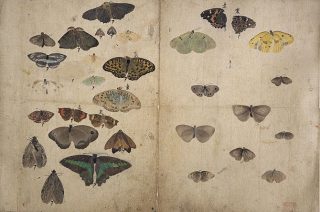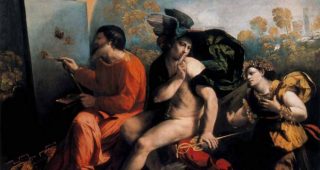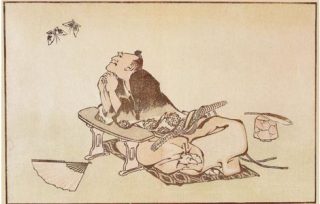
What would our summers be without the ethereal and graceful presence of butterflies decorating air with colored light-hearted swarms? Even the Japanese are attracted by this season magic to the extent that their fondness for butterflies is clearly reflected in the fine arts and the ukiyo-e, but also in the family crests and the traditional kimonos.
Butterfly is a typical symbol of womanhood and successful marriage, with the result that decoration of kimono and yukata, women’s summer cloth, largely takes its cue from that lepidopteron. By the way, there is even a manner of knot-tying the obi, the kimono belt, that is evocative of a butterfly. Even some traditional hairstyles, as with yoko-hyogo, are reminiscent of butterfly swings.
The insect under examination also symbolically evokes metamorphosis, transformation. This is the case, in the Japanese culture, for a young maiden which becomes a woman, but also for the cycle of life and death. Therefore, it is considered that butterflies either carry or are representative of the souls of the dead. The Japanese poetry sometimes uses butterflies as a symbol for souls of lovers that killed themselves together.
Last, many of us experienced as children how difficult it was to grasp butterflies with our hands: maybe that’s why those flying insects are in Japan associated with challenging mystery or with problems leading to madness, so that following a butterfly may result in dispelling overwhelming doubts.
Likewise the eastern art, even the western counterpart feeds off of symbols. It is no accident that the butterfly metamorphosis represented the soul in the west culture, so that Psyche, as beloved by Cupid, has been portrayed with butterfly wings. However, if a caterpillar turning into a butterfly-soul can foreshadow death in ancient times, the butterfly casting off its husk rather becomes symbol of life and resurrection for the Christian West. In the hands of the Child Jesus and the Madonna the butterfly alludes to the soul resurrected.

Jupiter as a painter of butterflies, authored by Dosso Dossi, could be seen as an image of the ancient world that, representing soul in the form of butterfly, ponders whether there is an afterlife.

In his philosophical bent, he looks a bit, curiously, like Hokusai’s philosopher caught in the act of looking at a pair of butterflies floating up off the ground. According to a valuable interpretation, the print represents the Chinese philosopher Zhuangzi. Story goes that one night Zhuangzi dreamed of being a blithely swingable butterfly. When he waked up, he asked a question: really was himself Zhuangzi at the time of awakening, or really was he a butterfly that just at the same time started dreaming that he turned into Zhuangzi?
It’s interesting to note that Japanese and Western cultures, though so far apart, have linked both to the image of the butterfly a symbol of the soul, although in the East is the soul of the deceased, while in the West it is the resurrected soul.
Copyright © arteingiappone – All rights reserved
The pictures are from:
http://www.tnm.jp/modules/r_collection/index.php?controller=other_img&size=L&colid=A168&img_id=4&t=&lang=en
https://commons.wikimedia.org/wiki/File:Dosso_Dossi_010.jpg
http://www.katsushikahokusai.org/philosopher-watching-a-pair-of-butterflies.html